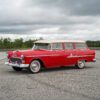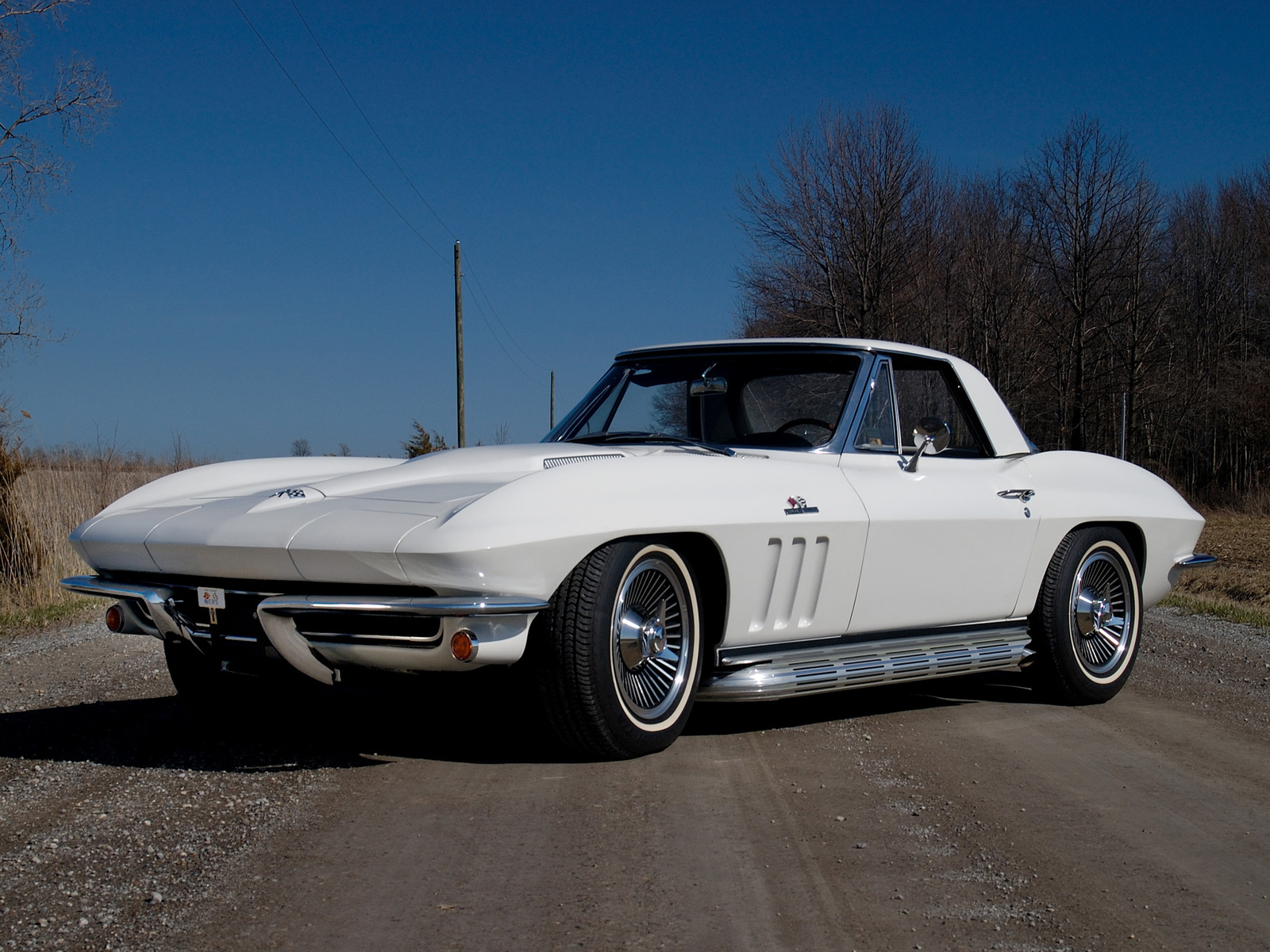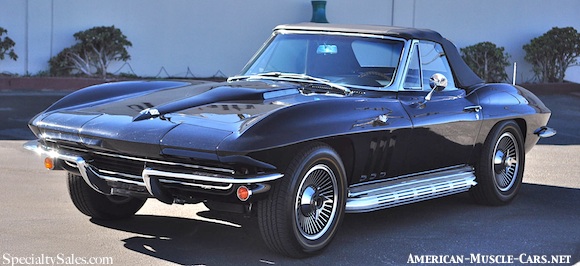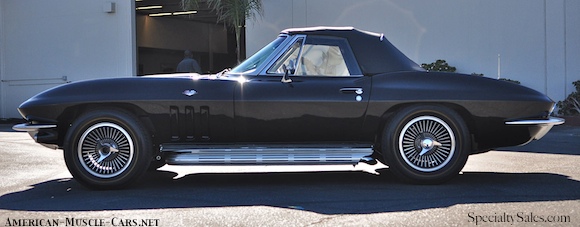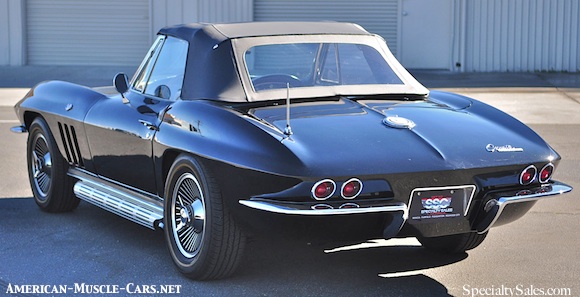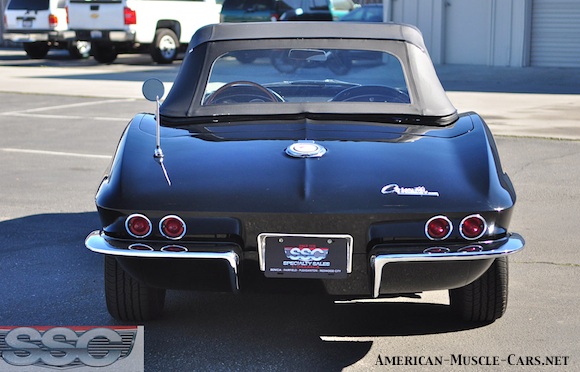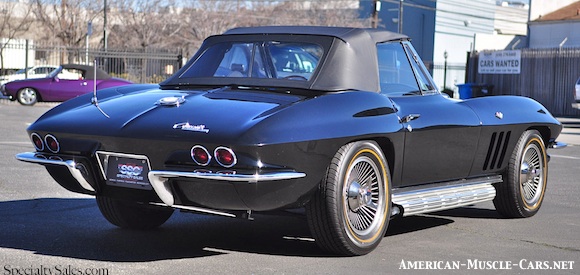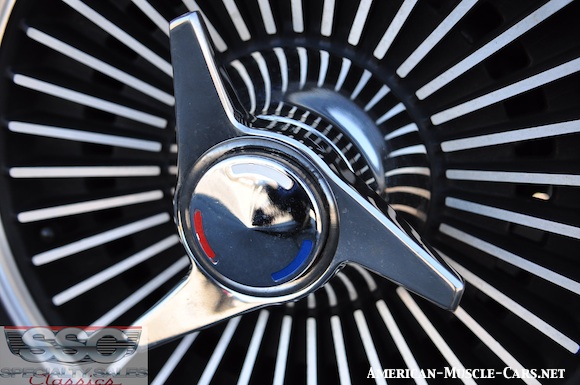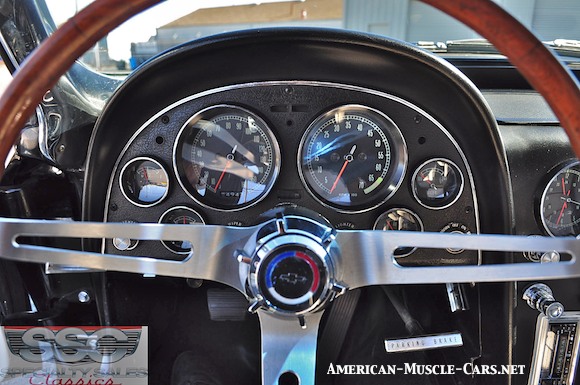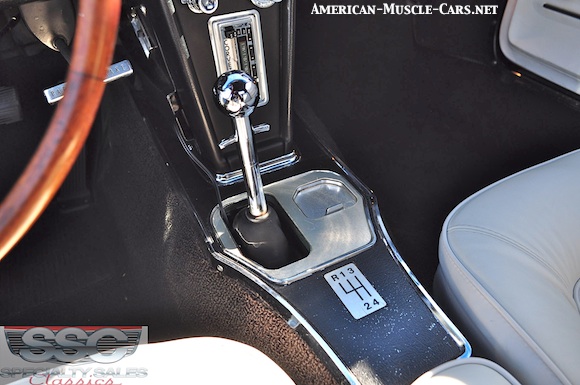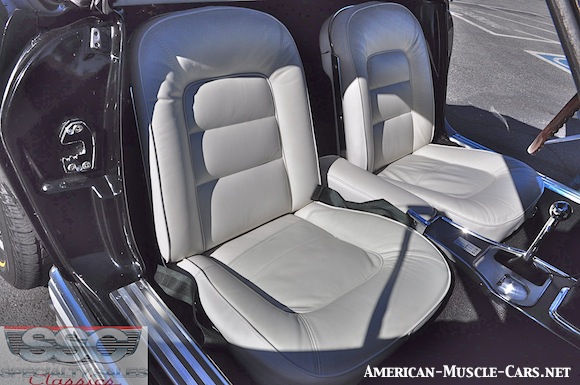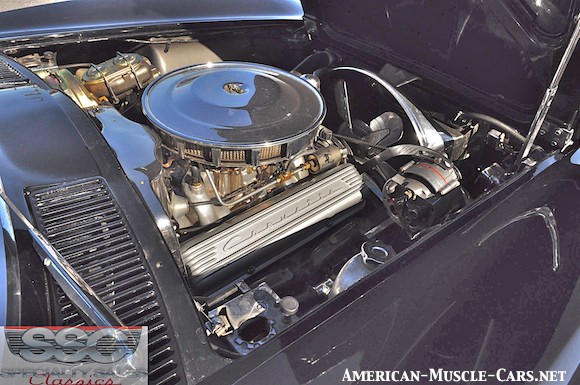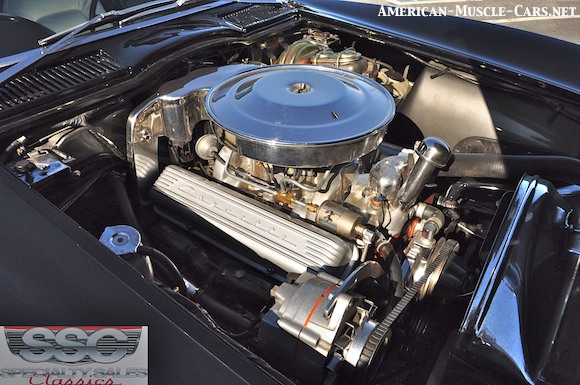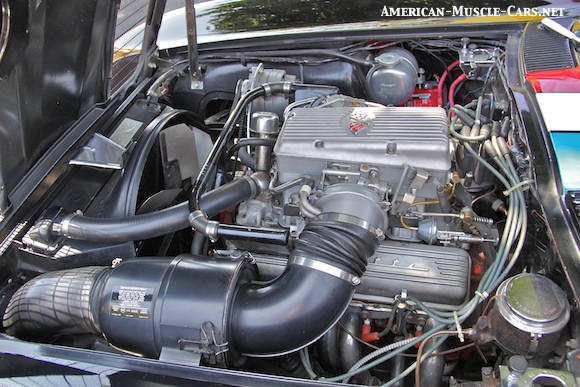1965 Chevy Corvette

1965 CHEVY CORVETTE MILESTONES
The 1965 model year is significant for it’s several ‘firsts’, ‘lasts’ and ‘onlys’. It was the first year for disk brakes, 4-wheels to be exact, and as standard equipment no less, although you could still option for drum brakes and receive a $64.50 credit (it’s hard to imagine anyone wanting to do this, yet 316 ordered them this way). It was also the first year for the now-famous side exhaust option (RPO N34), the first year when two different hoods were offered, probably because it also happened to be the first year when you could get a small block or a big block engine. It was the last year for Rochester’s brilliant mechanical fuel injection, an expensive option ($538) that relatively few ordered (only 771). The day of the Big Block had arrived.
1965 Chevy Corvette INTERIORS
1965 Chevy Corvette ENGINES
1965 CHEVY CORVETTE ENGINES
While the 1965 Chevy Corvette was the first year for an optional big block V8, it was the only year for the 396 cubic inch big block. It would be replaced in 1966 by the 427. But for ’65, GM’s draconian policy against using engines any larger than 400 cubic inches forced Chevrolet to make do with the Turbo Jet 396, no slouch itself at 425hp at 6,400rpm. This helped to spell the end of the exotic Rochester fuel injection system making 375hp on the 327 V8. This was an expensive option (at $538.00) and one that was hard to keep in tune, compared to the brute-force approach of a simple, carburated big block that cost less (just $292.70) and made more power. Back then gas was cheap, so no one cared that the “Fuelie” was good for 20mpg highway, and ran the same hot or cold, at high altitude or sea level, and under high-G cornering. But comparing the prices and outputs of each engine, it became quickly apparent that the 327 Fuelie cost $245 more than the 396, and made 50 less horsepower. This was not lost on the buying public, as only 771 Fuelies were sold in ’65, but 2,157 were built with 396 big blocks. The rest of the 1965 Chevy Corvettes came with the usual selection of 327s, the base 300hp L75, 350hp L79 (with hydraulic lifters) and the 365hp L76. This latter engine was the same as the Fuelie except that it used a single 4-barrel carburetor. Both engines used the 1.94 Fuelie heads, the Duntov mechanical cam and solid lifters. These 327s were solid runners, fast, powerful, with ample torque and yet willing to wind, in ways that the longer-stroke 350 didn’t enjoy.
327 V8 w/SINGLE 4-BARREL
375hp 327 V8 w/ROCHESTER FUEL INJECTION
The 1965 Chevy Corvette was the last to offer Rochester Fuel Injection. From them on, big power came from big blocks. It turns out it was way cheaper building a bigger engine than it was fuel injecting the small block.
ABOVE: This new F.I. was larger than the old system, to accommodate the bigger breathing needs of the new 327 over the 283. It also capitalized on the lessons learned with the first system. Here you can see the enormous throttle body on the left of the big airbox. Note the large cylindrical air filter on the lower-right. This houses a conical air filter element, and breathes cold air through a hole behind the grille.
BELOW: They were a bear to tune, but once you got them right, they were killers on the street! When in proper tune, they were very drivable, got good mileage (for the times), gave you more power, but also gave you a few more rpm than you could get out of a carburated car.
ABOVE: The older Rochester F.I. was introduced in 1957 on the 283hp 283 V8, the first production engine ever to produce 1 horsepower per cubic inch. Actually it made more like 300, but Chevy thought 283 sounded better. When the standard Corvette engine went from the 283 to the 327 in ’62, Chevy began working on a larger version, which was introduced in the ’63 Corvette, and continued through the ’65 model year. Fuel injection was always an expensive option (that’s why they’re so rare today), and by this point it became obvious that it was cheaper to get more power by dropping in a big block.
BELOW: The entire high-pressure fuel system ran off of a pump at the back of the fuel meter (on this side of the airbox), which was powered by a short speedometer-type cable that ran off of the distributor. You can see it bending almost 90-degrees from the distributor to the pump. The Corvettes of the day had mechanical tachometers which were cable-driven off of the left side of the distributor. On Fuelie cars, this cable drive continued through to the right side of the distributor as well, allowing a speedo cable to be hooked up to both ends, one for the tach, and one for the F.I. Caution if you own one: Keep it lubed. With that tight bend, if it goes dry it will snap, then the car is dead. I know, it happened to me with mine. It would be a good idea to carry a spare.
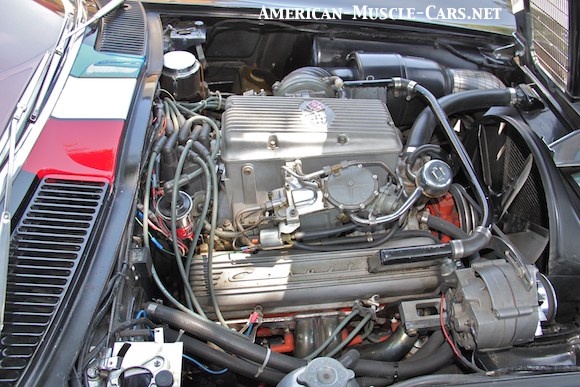
1965 Chevy Corvette PRODUCTION NUMBERS
| RPO
19437 19467 L75 L76 L78 L79 L84 M20 M35 N03 N14 P48 C60 |
DESCRIPTION
1965 Chevy Corvette Coupe 1965 Chevy Corvette Convertible 300hp 327 V8 365hp 327 V8 425hp 396 V8 350hp 327 V8 375hp 327 V8 4-speed manual trans 2-speed Powerglide auto 36-gallon fuel tank (Coupe only) Side Mount Exhaust Cast aluminum Knock-Off Wheels Air Conditioning |
QUANTITY
8,186 15,376 8,358 5,011 2,157 4,716 771 21,107 2,021 41 759 1,116 2,423 |
$ RETAIL
4,321 4,106 53 129 292 107 538 188 199 202 134 322 421 |
THE NUMBERS NEVER LIE, OR DO THEY?
It’s “Buyer Beware” in the classic car world. 2-barrel Mustangs get turned into GT-350s. 6-cylinder Barracudas get an engine swap and suddenly they’re a Hemi Cuda. Corvettes are harder to fake because there are fewer special models like that, and the numbers and know how are so commonplace today that it’s easy to find an expert on Corvettes. If all else fails, call the local Corvette Club. But take note of just how low the production was on some of the very high value options. Things like AC, which bring huge money if you have an original “Air Car”, only had 2,423 examples built with it in ’65. Only 759 cars came with factory Side Pipes, but I’m sure many more than that are running around today. They look great and there’s nothing wrong with dolling your Vette up with all the best optional equipment, if you’re so inclined. As long as it is never represented as an authentic car with that option, to a potential buyer or anyone else. If you’re looking at a ’65 “Big Tank Coupe”, and you’re preparing to pay “Big Tank-money” for it, be mindful of the fact that only 41 were built, and perhaps only half of those are still running around. Only 1,116 ’65 Vettes got factory Knock-Off wheels, yet you see them everywhere. Check the build sheet (tank sticker) if you can get it, or bring in an expert.


